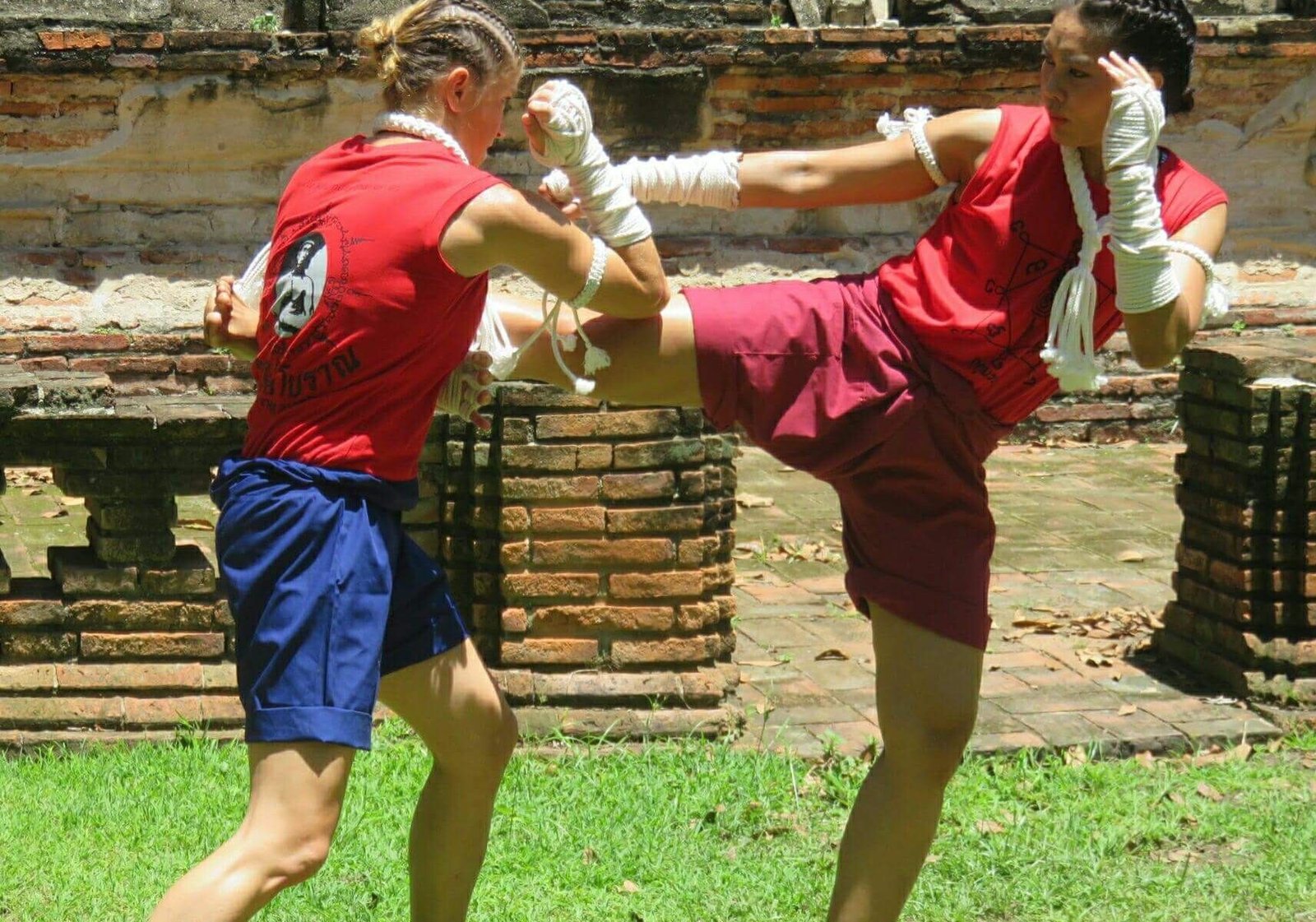Why Start Muay Thai?
This is a question I get asked all the time. The answer is both personal and universal: I didn’t choose Muay Thai—Muay Thai chose me.
It was 2006, and I was 25 years old. I wasn’t a kid anymore, and while I had always been athletic, I had never found a sport that truly ignited my passion. Gymnastics, my first love, was a distant memory, something I had left behind with adolescence.
At the time, I was just like many other young women—still figuring things out. I had been in a long-term relationship and dreamed of having a family, but job instability kept me stuck in a frustrating routine. Then, almost by accident, Muay Thai entered my life.
Is Muay Thai for Everyone?
One of the things I love most about this sport is its versatility. Muay Thai can be practiced at any age and any level, whether you’re looking for a way to stay fit or want to discover a new side of yourself.
As a fitness activity, it’s one of the most complete sports out there. It improves strength, endurance, flexibility, coordination, and even mental health. And no—you don’t have to “get hurt” to train. Yes, it’s a contact sport, but many gyms offer programs that focus on technique and conditioning rather than sparring or fighting.
However, if your goal is to step into the ring, that’s a whole different story. Training for a fight isn’t for everyone. It demands discipline, sacrifice, and a level of physical and mental preparation unlike anything else. When you compete, your opponent has one objective: to knock you out. It’s not a race—it’s a direct clash, and you need to be ready not only to throw strikes but to take them as well.
A Physical and Mental Transformation
For me, it all started with the desire to push my limits. From day one, training challenged me. As a woman in a traditionally male-dominated sport, I felt like I had something to prove. I didn’t want people to think, “She’s just a girl.”
So, I pushed myself. Three training sessions a week soon weren’t enough—I started running on my days off, doing sprints, constantly improving. My body transformed—my core became stronger, my arms more defined. But the real transformation happened inside. I gained confidence, discipline, and a completely new relationship with my body and mind.
Stepping into the Ring for the First Time
Training wasn’t enough anymore—I needed to test myself. The first time I stepped into the ring, I had no idea I would become addicted to that feeling. Fighting isn’t just a physical challenge; it’s a mental one. It’s about discovering what you’re truly capable of, facing your fears, and pushing past them.
My Muay Thai
Over the years, Muay Thai has become more than just a sport—it’s a part of me. It has guided me through the toughest moments of my life, taken me around the world, introduced me to incredible people, and given me experiences I will never forget. It’s not just a workout—it’s a way of life, a philosophy.
Of course, there are things that frustrate me, like how Muay Thai is often watered down or turned into a commercial product. But to me, it will always be my Muay Thai—the one that taught me sacrifice, resilience, joy, and pain. The one that gave me travel, adventure, and a unique identity.
Want to Learn More?
If you have questions or want to start your own Muay Thai journey, feel free to reach out! Whether you’re interested in training for fitness or stepping into the ring, I’d love to help you discover this incredible world.
Muay Thai changed my life—and it just might change yours too.

